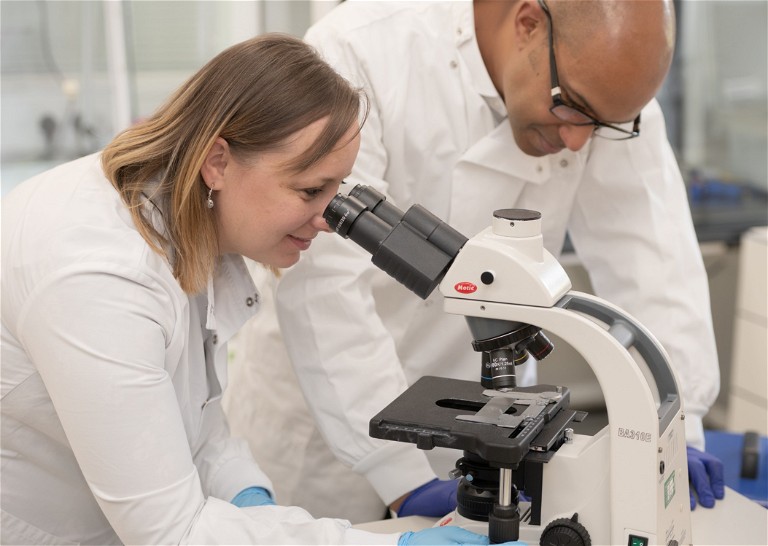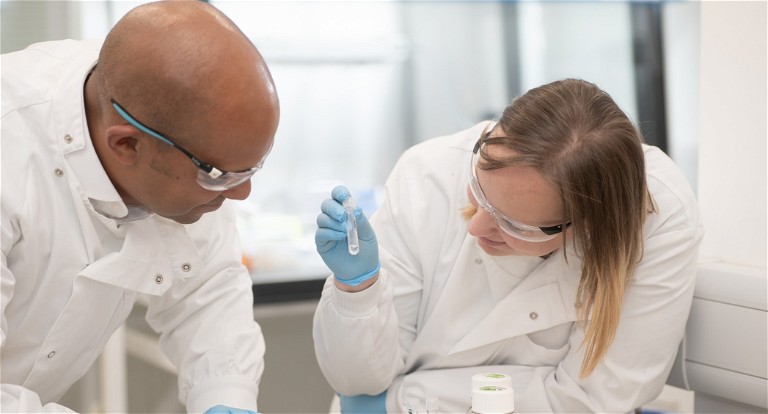RARE DISEASES
Overcoming obstacles in rare disease treatment
Dan Williams from SynaptixBio considers the problems facing the ongoing treatment of rare diseases, as well as how the pharma industry is moving forwards in their treatment

Rare diseases represent a major challenge for healthcare systems, drug developers and governments worldwide. Every healthcare system has priorities and constraints; drug developers have to consider the attractiveness of the market for rare disease drugs, and governments too face difficult choices, especially when economic conditions are tough. On the other side, the problems faced by patients and their families are all too common: late or missed diagnoses, inadequate testing facilities and lack of support are part of every story.
That being said, there is much that can be done within existing systems and institutions to improve the outlook for rare disease research, drug development and patient support.
According to Rare Disease UK, “one in 17 people will be affected by a rare disease at some point in their lives. This amounts to 3.5 million people in the UK and 30 million people across Europe”.1 The majority currently have no effective treatment. There are at least an estimated 7,000 rare diseases today, with more being identified all the time. 80% have a known genetic origin, but they can also be caused by a range of other factors – compromised immune system, infections, allergies and more. So, in the face of multiple challenges and constraints, what can be done to improve patient outcomes?

Familiar stories
Getting the right diagnosis, early, is widely agreed to be the most serious challenge faced by those affected by a rare disease. On average, it takes over four years to get an accurate diagnosis, according to Rare Disease UK.
The stories of patients with hypomyelination with atrophy of the basal ganglia and cerebellum (H-ABC), one of the most severe forms of TUBB4A leukodystrophy, a neurodegenerative disease that affects mainly babies and young children, are highly illustrative and distressingly familiar. These stories include delays in getting appointments at specialist testing centres, delays in identifying the disease and, because patients present with multiple, complex symptoms, being bounced around departments and health centres. Rare diseases often exhibit a wide variety of symptoms that can overlap with more common conditions, making them difficult to distinguish. The human cost is high, both for patients and their carers, but the cost for healthcare systems is also very high; over the last ten years the cost to NHS England of rare disease patients up to the point of a diagnosis is greater than £3.4bn, according to a report from 2018 by Imperial College Health Partners.
So how could this situation be improved? The answer could be a combination of better cross-body communication, new technologies and a stronger role for patients’ representatives.
Towards a cure?
Finding a cure is of course the ultimate goal. Understanding the causes of the disease is the first step and to this end much work has been done. TUBB4A-related leukodystrophies are genetic, debilitating and life-limiting neurodegenerative diseases. As mentioned above, H-ABC is one of the most severe forms.
Currently, there is no cure.
They are caused by a mutation in the TUBB4A gene, which causes toxic proteins to form. Those proteins are abundant in the brain’s white matter and cerebellum and are critical components for the assembly of the myelin sheaths that surround nerve fibres in the brain.
The rate of progression varies with disease severity, with manifestations including deterioration of motor functions and developmental delays. Survival is often limited to the teenage years. Normal developmental milestones can be significantly affected, leading to difficulties with daily living.
One approach (which has worked for other dystrophies such as Duchenne muscular dystrophy) is the use of antisense oligonucleotides, which can inhibit the expression of specific genes, in this case the mutated TUBB4A gene, leaving other proteins to facilitate the formation functional myelin sheaths. Currently, research is underway to determine if this could help alleviate the major symptoms of TUBB4A-related leukodystrophy.
A little knowledge
A major challenge in getting the right diagnosis is the limited knowledge of rare diseases such as H-ABC. With few patients known to research centres, clinical knowledge of the diseases and their progression is often lacking and confined to specialist centres.
Equally, patients don’t always know where to find adequate resources and support. Better collaboration between healthcare providers, the social care system, researchers, patient groups and drug developers would surely lead to more efficient use of resources and information sharing.
As a first suggestion, patient advocacy groups could act as a central body to facilitate patient access to a variety of resources. These groups have, perhaps, the greatest incentive to progress knowledge and disseminate best practice, as they typically consist of, or represent, parents with children affected by a rare disease. For instance, the H-ABC foundation is frequently contacted by patients’ families who have received a diagnosis but have not been given further support.2 Such families could be put in touch with the right clinicians, who could add to their clinical knowledge of the disease. So patient advocacy groups could be used more formally within the system as a focal point for sharing research and other medical knowledge.
In the genes
Another challenge in diagnosing rare diseases is late genetic testing. The most dramatic change in our diagnostic capability is in the field of genetic and molecular diagnostics. Gene sequencing technology has revolutionised the identification of genetic mutations and abnormalities.
The NHS is introducing a new, fast-track service for people suffering from rare diseases that affect the central nervous system. This new service aims to review 300 patients per year, which is a great start.
Testing newborns is the ideal. Blood spot tests are offered typically five days after birth and can reveal a range of rare diseases including cystic fibrosis and sickle cell disease. Currently, they do not test for the genetic mutations that lead to leukodystrophies, and it is not yet known if that is possible with newborns’ blood. However, it is likely to become possible. It would seem a natural step to marry up these two advances, making wider genetic testing from newborn blood the standard.
AI – opportunities and challenges
Rapid advances in artificial intelligence (AI) for data analysis, pattern recognition, decision-support systems, genomic analysis, image analysis, predictive modelling and more surely means that rare diseases will be more quickly identified – especially if coordination and data sharing processes can be improved.
The hope would be that AI tools could help distinguish rare disease symptoms from more common ones, getting to the very heart of the challenge – early identification.
A key factor is learning from real-world data. In a typical consultation it may be near impossible to research historical records to look for patterns, tell-tale signs and other data-based clues – but this is precisely what ‘trained’ AI tools can do.
On the other hand, the use of such tools raises serious concerns – not least patient confidentiality and data security. These are paramount in any health system, so the use of powerful pattern-matching algorithms to search vast (real-world) data sets inevitably raises issues.
Natural barriers include those very human psychological fears that afflict the emergence of any new technology. Experienced clinical judgment, intuition and consideration of ‘non-medical’ symptoms are just some of the things that ‘machines’ don’t have or can’t do.
There is also a legitimate worry of losing the ‘human touch’ with patients. In addition, there are ethical and regulatory issues; can an AI be held accountable for a wrong diagnosis?
More prosaic concerns include the challenges of integrating AI tools into clinical workflows and the need for healthcare professionals to learn new skills. Introducing new tools and processes across vast institutions like healthcare systems is expensive and time-consuming.
Conclusions
Today it seems like new technologies could finally help overcome the limitations that have held back progress in identifying rare diseases. As the example of H-ABC shows, there are innovative solutions that can be applied to a number of conditions; softening the impacts on affected families must be a priority for the health and social care systems.
For pharmaceutical companies, developing a drug for mass market consumption is an already complex, expensive and often very long process; researching and developing drugs for rare diseases adds tremendous challenges. The patient populations are much smaller, with important implications for clinical trials such as difficult recruitment and limited clinical expertise.
There is much to be done, but there is hope. Advances in technology emerge daily, and government initiatives can only, over time, help. With willingness and determination, the fate of those impacted by a rare disease can be dramatically improved.
References
- Visit: raredisease.org.uk/
- Visit: h-abcfoundation.org/

Dan Williams is chief executive officer of SynaptixBio. He has spent over 20 years in the industry after studying at the University of Dundee, UK, for a degree in biochemistry and physiology, and a PhD. After his PhD he entered the industry, where he worked his way up to senior scientist. Dan then took over management of a cell research group, initially running cell biology research and then preclinical development.
Previously he has managed the larger research group at Adaptimmune, and moved from that position to the vice president of Research Operations. From there, Dan moved to Meatable as the chief product officer. Dan co-founded SynaptixBio in 2021 with the aim to push leukodystrophy therapies through to clinical trials.